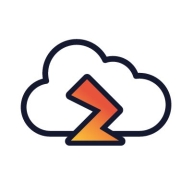

CloudStack and Zesty are competing products in the cloud management space. Users generally prefer Zesty for its advanced features, even though CloudStack may offer more favorable pricing and support.
Features: CloudStack focuses on scalability and integration capabilities, making it suitable for enterprises needing flexible cloud solutions. It provides strong infrastructure management and scalability for extensive integration options. Zesty offers automation, cost-optimization, and efficiency in cloud management, appealing to businesses seeking effective resource management.
Ease of Deployment and Customer Service: Zesty provides streamlined deployment with strong customer support, ensuring assistance during integration. Contrarily, CloudStack requires more technical expertise for deployment but is supported by a large community and abundant resources, offering a more traditional setup experience.
Pricing and ROI: CloudStack generally presents a lower setup cost and provides consistent ROI through its open-source model, attracting budget-conscious organizations. Zesty demands a higher initial investment but offers higher ROI due to its cost-saving features and resource management efficiency, delivering more value over time.


Zesty is used for optimizing cloud infrastructure costs, automating resource scaling, providing real-time visibility into spending, and managing unused resources efficiently. It helps maintain budget control while scaling operations, making cloud deployment cost-effective.
Zesty offers a comprehensive approach to cloud cost management, focusing on real-time optimization, resource scaling automation, and spending visibility. Designed to reduce wastage and ensure efficient cloud operations, it integrates seamlessly with existing systems, providing detailed analytics and actionable insights. Users find Zesty's intuitive dashboard and effective cost-saving tools instrumental in maintaining budget control. However, improvements are needed in performance speed, functionality, and support responsiveness. Limited customization options and insufficient onboarding resources also present challenges for new users.
What are Zesty's key features?Zesty is implemented across industries that demand efficient cloud cost management and resource optimization. For tech companies, it streamlines scalability and supports rapid growth without ballooning costs. Financial services use it for budget control and to maintain operational efficiency. Educational institutions benefit from its ability to manage large-scale deployments economically. Each industry finds Zesty's automation and analytics crucial for staying competitive and maintaining lean operations.
We monitor all Cloud Management reviews to prevent fraudulent reviews and keep review quality high. We do not post reviews by company employees or direct competitors. We validate each review for authenticity via cross-reference with LinkedIn, and personal follow-up with the reviewer when necessary.